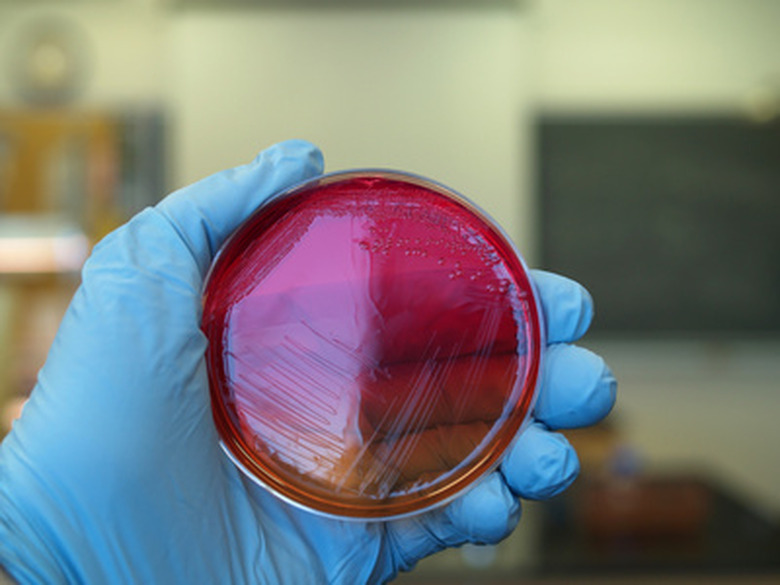Bacterial Cell Cytoplasm
Bacteria are one-celled organisms that can cause disease in humans and yet are also essential to our good health because they play an important role in our digestion. Bacteria are prokaryotic cells; they don't have a nucleus enclosed by a membrane. Instead of having DNA in chromosomes, bacterial genetic information is contained in a loop of cellular material called a plasmid. The plasmid, nuclear materials, water, enzymes, nutrients, waste materials and ribosomes all circulate within the bacterium in a thick liquid called cytoplasm.
The Purpose of Cytoplasm
The Purpose of Cytoplasm
Bacteria have a simple internal organization that consists of specialized parts rather than distinct organs surrounded by membranes. These specialized parts are called organelles. The cytoplasm is where the organelles carry out the processes necessary for the life of the bacterium. The components of the cytoplasm are responsible for cell growth, metabolism, elimination of waste and replication (reproduction) of the cell.
The Bacterial Genome
The Bacterial Genome
The genome is the most important feature in the cytoplasm. It is located in a central region of the cell called the nuclioid. The genome is a clump or coil of DNA that controls all the functions of the bacterial cell and produces the proteins that the bacterium needs to survive. The clump of DNA is not contained in a distinct, walled-off nucleus in bacterial cells as it is in animal and plant cells; bacterial DNA is free-floating.
Ribosomes
Ribosomes
Ribosomes are granular-shaped organelles that are responsible for reading the instructions or directions in the long strands of DNA and directing the production of bacterial proteins. Large numbers of ribosomes float freely in the cytoplasm. When they are needed, the ribosomes fulfill their purpose by attaching to genetic material, providing a platform for protein synthesis and then floating away until they are required again.
Plasmids
Plasmids
Plasmids are small genetic structures found in many bacteria that contain strands of coiled DNA. Plasmid DNA is not used in reproduction. Instead, plasmids carry out other specific and important functions. When bacteria reproduce, plasmids carry along special properties such as antibiotic drug resistance, resistance to heavy metals and factors necessary for infection of animals or plants. These properties confer certain advantages and protections to the bacteria.
Storage Granules
Storage Granules
Storage granules provide areas for holding nutrients and other energy-producing substances. These substances are reserves stored as glycogen (a polysaccharide or carbohydrate energy source), lipids (fats), polyphosphate (a stabilizer that helps hold water) or, in some cases, sulfur or nitrogen.
Cite This Article
MLA
Truschel, Ann Louise. "Bacterial Cell Cytoplasm" sciencing.com, https://www.sciencing.com/bacterial-cell-cytoplasm-6323922/. 24 April 2017.
APA
Truschel, Ann Louise. (2017, April 24). Bacterial Cell Cytoplasm. sciencing.com. Retrieved from https://www.sciencing.com/bacterial-cell-cytoplasm-6323922/
Chicago
Truschel, Ann Louise. Bacterial Cell Cytoplasm last modified August 30, 2022. https://www.sciencing.com/bacterial-cell-cytoplasm-6323922/
